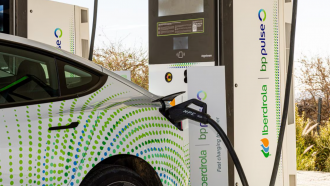Google's self-branded smartphones, the Google Pixel and Pixel XL, have been around long enough to warrant numerous reviews from a host of reputable publications, and while the reviews weren't shy in mentioning the smartphones' heavy pricing, they still largely suggest that the pair are the best Android devices currently out now.
The phone offers a vanilla Android experience that can't be found on other phones, and this is the result when makers of the software also make the hardware. There's a seamless synergy rooted in the overall experience. That said, the Google Pixel and Pixel XL, while ambling fairly well through their share of torture tests, does lack one feature that's slowly becoming present in modern smartphones: water resistance.
Development Time Of Pixel Phones
While an unofficial test has rendered the phone still functional after being submerged underwater for 30 minutes, it begs the question why the manufacturer simply didn't design the two phones with water resistance in mind. For the record, HTC made the Pixel and the Pixel XL, but Google's pretty tight-lipped about the whole deal, relegating HTC as a "contract manufacturer." People have only gotten a brief look at the device, but recent evidence suggests what the development process for the phones might have been really like.
The Pixel phones had only nine months of development time, according to Wired's David Pierce, speaking on the Wired podcast. When asked why Google was unable to make the phones water-resistant like some of the high-end flagships currently in the market, Pierce said that Google's answer was essentially "we ran out of time." Apparently, there were previous plans for the smartphone that had to be scrapped altogether. The development needed to start from ground zero after the failed plans, and the smartphones had to be kludged in nine months' time.
When Huawei Said No
That's not to say that the Pixel and Pixel XL are insufficient without water resistance. They are excellent phones with possibly the best camera ever on a mobile device, but water resistance is slowly becoming a formidable selling point.
The short development span might have been the result of Google's decision to outfit the phones with its own branding before development began. Huawei was supposed to create the phones, but it balked at the idea of being relegated as a mere manufacturer of the phones, where its branding would be less prominent. When they withdrew, Google turned to HTC.
The concept of adding water resistance greatly influences the design process of a manufacturer since there are so many disparate parts to work around. Nine months is too short of a duration to patch all things up and release a functioning phone at the end of the line.
Keep in mind that this is Google's first line of self-branded phones. Water resistance could very well be a priority once they begin plans on the Pixel and Pixel XL's successor in the future.








